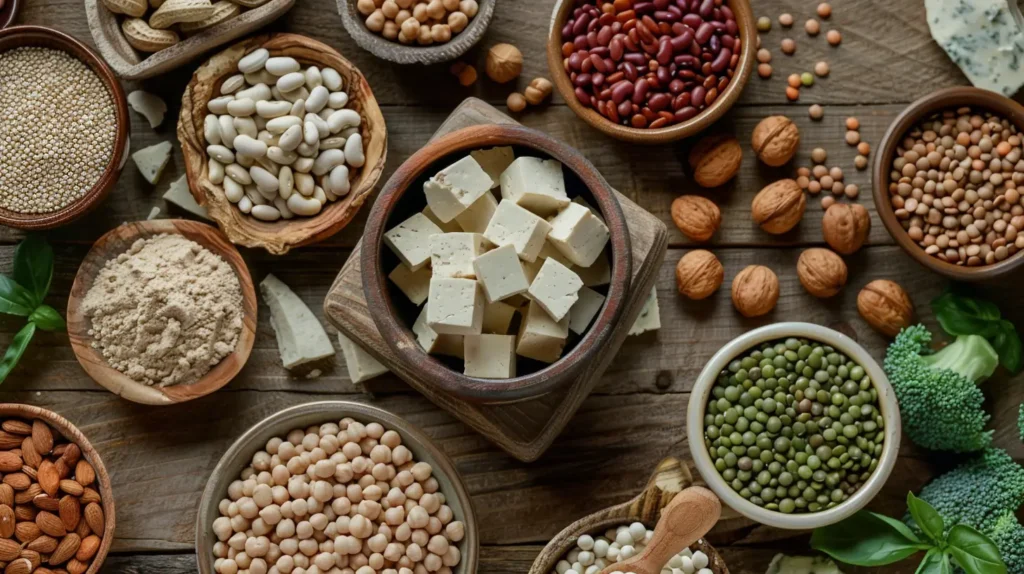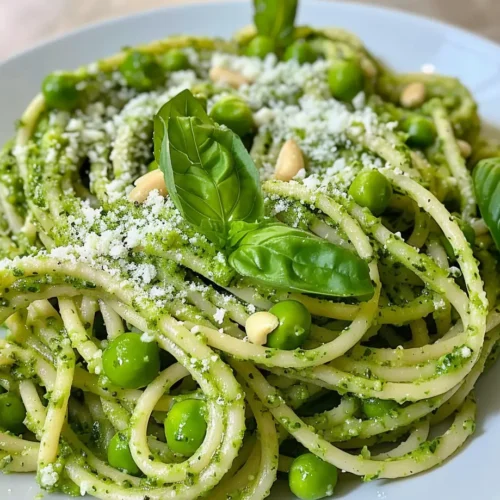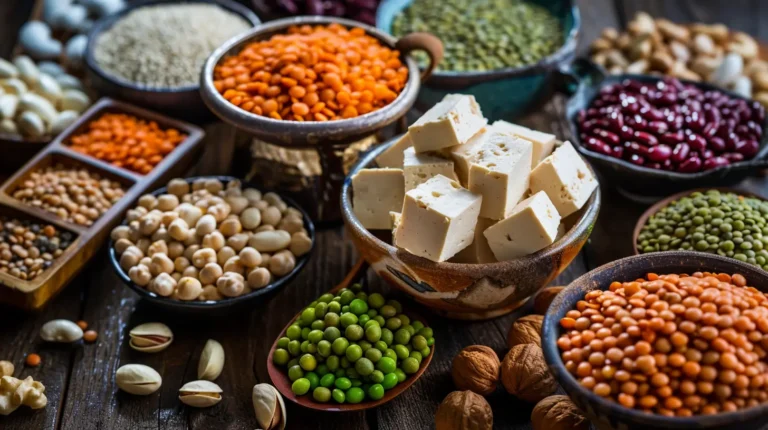Table of contents
Introduction
In today’s health-conscious world, many people are opting for plant-based diets for various reasons, including health benefits and ethical concerns. One common question that arises is how to get enough protein without consuming meat. Protein is essential for muscle repair, growth, and overall bodily functions, making it a critical component of our daily diet. For those looking to maintain or increase their protein intake without meat, there are numerous plant-based options available that can meet your nutritional needs.
In this article, we will explore the best ways to achieve 40 grams of protein per day without relying on meat. We’ll discuss the importance of protein, highlight key plant-based protein sources, and provide practical tips and recipes for incorporating these foods into your diet. By understanding and utilizing these protein-rich foods, you can maintain a balanced and healthy diet without meat.
Understanding Protein
Protein is a vital macronutrient necessary for the body’s growth, repair, and maintenance. It plays a crucial role in building muscles, repairing tissues, and supporting various bodily functions. Proteins are composed of amino acids, which are often referred to as the building blocks of life. There are two types of amino acids: essential and non-essential. While our bodies can produce non-essential amino acids, essential amino acids must be obtained from our diet.
One important distinction to make is between complete and incomplete proteins. Complete proteins contain all nine essential amino acids, while incomplete proteins lack one or more of these crucial components. Animal products are typically complete proteins, but many plant-based sources can also be complete or can be combined to form complete proteins through a process known as protein complementation. For example, pairing rice and beans or hummus and pita bread can create a complete protein meal.
Understanding the different types of protein and how to combine plant-based sources effectively can help ensure you get all the essential nutrients you need. For more detailed information on protein sources and their benefits, you can refer to resources like Healthline and WebMD.
The Basics of Non-Meat Protein Sources
There are numerous plant-based protein sources available that can help you meet your daily protein needs without relying on meat. These include a variety of legumes, nuts, seeds, grains, and soy products, each offering unique nutritional benefits.
Legumes such as beans, lentils, and peas are not only high in protein but also rich in fiber and essential nutrients. For example, one cup of cooked lentils provides about 18 grams of protein, making them a great option for those looking to increase their protein intake Verywell Fit.
Nuts and seeds are also excellent sources of protein. Almonds, chia seeds, and hemp seeds are particularly noteworthy. Chia seeds, for instance, contain 4 grams of protein per two tablespoons and also offer a good amount of omega-3 fatty acids.
Whole grains like quinoa and buckwheat are not only high in protein but are also complete proteins, meaning they contain all nine essential amino acids. One cup of cooked quinoa provides about 8 grams of protein and can be used in a variety of dishes.
Soy products, including tofu, tempeh, and edamame, are versatile and protein-rich. Tofu, for example, offers about 20 grams of protein per cup, making it an excellent meat alternative.
For more detailed information on these protein sources and how to incorporate them into your diet, you can refer to articles about How to Get 40 Grams of Protein for Lunch: A Comprehensive Guide.
Top Sources of Plant-Based Protein

Legumes (Beans, Lentils, Peas)
Legumes are an excellent source of protein and essential nutrients. They include beans, lentils, and peas, all of which are rich in protein and fiber. One cup of cooked lentils provides about 18 grams of protein, while chickpeas and black beans offer around 15 grams of protein per cup.
Legumes are also versatile, making them easy to incorporate into soups, salads, and stews. For example, adding lentils to a vegetable soup or mixing chickpeas into a salad can significantly boost your protein intake.
Nuts and Seeds
Nuts and seeds are not only protein-rich but also provide healthy fats and essential minerals. Almonds, chia seeds, hemp seeds, and sunflower seeds are particularly high in protein. For instance, two tablespoons of chia seeds contain 4 grams of protein, while an ounce of almonds provides about 6 grams. These can be eaten as snacks, added to smoothies, or sprinkled on top of salads and cereals for an extra protein boost.
Whole Grains
Whole grains such as quinoa, brown rice, and oats are valuable sources of plant-based protein. Quinoa, in particular, is a complete protein, offering 8 grams per cooked cup. It can be used as a base for salads, added to soups, or served as a side dish. Brown rice and oats, while not complete proteins, still contribute significantly to your daily protein intake, with 7 grams and 6 grams of protein per cup, respectively.
Soy Products
Soy products like tofu, tempeh, and edamame are among the best plant-based protein sources. Tofu provides approximately 20 grams of protein per cup, making it an excellent meat substitute in a variety of dishes. Tempeh, which is fermented soybeans, contains even more protein, with about 31 grams per cup. Edamame, or young soybeans, offer 17 grams of protein per cup and can be enjoyed as a snack or added to salads and stir-fries.
Vegetables
Certain vegetables also provide a decent amount of protein. Spinach, broccoli, and Brussels sprouts are good examples, with each cup offering between 3 to 4 grams of protein. While their protein content is lower compared to legumes or nuts, they are still valuable additions to a protein-rich diet.
Protein-Rich Plant-Based Meals To reach 4 Grams of Protein
Breakfast Ideas
Starting your day with a protein-packed breakfast is essential for sustained energy and satiety. Smoothies are a great option, especially when you add protein powder, nuts, and seeds. For example, a smoothie with almond milk, a scoop of pea protein powder, a tablespoon of chia seeds, and a handful of spinach can provide a substantial amount of protein. Another excellent breakfast choice is oatmeal topped with almonds, pumpkin seeds, and a dollop of peanut butter, which offers both protein and healthy fats.
Lunch Options
For lunch, consider a quinoa salad mixed with black beans, corn, diced bell peppers, and a light vinaigrette. This meal not only provides a complete protein but also adds fiber and essential nutrients. Another great lunch option is lentil soup, which is both hearty and protein-rich. You can make a simple lentil soup by simmering lentils with vegetable broth, diced tomatoes, carrots, and celery, and seasoning it with herbs and spices.
Dinner Recipes
Dinner can be equally satisfying with protein-rich plant-based dishes. A tofu stir-fry is a versatile option, where you can sauté tofu with a variety of vegetables like broccoli, bell peppers, and snap peas, and season it with soy sauce and ginger. Another nutritious dinner choice is Pea Protein Pesto Pasta.

Pea Protein Pesto Pasta
Ingredients
- 400 grams whole wheat pasta
- 1 cup frozen peas, thawed
- 1/2 cup fresh basil leaves
- 1/4 cup Parmesan cheese, grated
- 1/4 cup pine nuts
- 2 cloves garlic
- 1/2 cup olive oil
- Salt
- pepper to taste
- Peas Optional
- Basil leaves for garnish
Instructions
- Cook the pasta according to package instructions until al dente. Drain and set aside.
- In a food processor, combine the peas, basil, Parmesan, pine nuts, and garlic. Pulse until the ingredients are finely chopped.
- With the processor running, slowly add the olive oil until the mixture forms a smooth pesto.
- Season the pesto with salt and pepper to taste.
- Toss the cooked pasta with the pea protein pesto until evenly coated.
- Serve garnished with extra peas and fresh basil leaves.
Snacks to Boost Protein Intake
Nuts and Nut Butters
Nuts and nut butters are excellent snacks to boost your protein intake throughout the day. A handful of almonds, walnuts, or pistachios can provide between 6 to 8 grams of protein per serving. Nut butters, such as peanut or almond butter, are also protein-rich, offering about 8 grams of protein per two tablespoons. Spread nut butter on whole-grain toast or apple slices for a quick and nutritious snack.
Protein Bars
Protein bars are a convenient and portable option for increasing your protein intake. Many commercially available bars are made with ingredients like oats, nuts, and protein isolates from peas or soy. For a homemade option, you can make protein bars using oats, almond butter, protein powder, and dried fruits. These bars not only provide a good protein boost but also contain healthy fats and fibers, making them a balanced snack choice.
Dips and Spreads
High-protein dips and spreads, such as hummus and black bean dip, are perfect for snacking. A serving of hummus provides about 2 grams of protein per tablespoon, and it’s easy to pair with vegetables or whole-grain crackers. Black bean dip offers a similar protein content and can be enjoyed with sliced bell peppers or whole-grain tortilla chips.
Meal Planning for Optimal Protein Intake
Planning your meals to ensure you meet your protein requirements without meat involves incorporating a variety of protein-rich plant-based foods throughout the day. This approach not only helps in getting enough protein but also ensures a balanced intake of other essential nutrients.
A well-planned day might look like this:
Sample Meal Plan for a Day
Breakfast: Start your day with a smoothie made with almond milk, a scoop of pea protein powder, a tablespoon of chia seeds, and a handful of spinach. This combination provides a substantial amount of protein and essential nutrients to kickstart your day.
Morning Snack: Enjoy a handful of mixed nuts, such as almonds and walnuts, which can offer around 6-8 grams of protein per serving.
Lunch: Prepare a quinoa salad with black beans, corn, diced bell peppers, and a light vinaigrette. This meal is rich in protein and fiber, keeping you full and energized throughout the afternoon.
Afternoon Snack: Snack on some hummus with sliced bell peppers or whole-grain crackers. Hummus provides about 2 grams of protein per tablespoon and is both nutritious and delicious.
Dinner: For dinner, a tofu stir-fry with broccoli, bell peppers, and snap peas seasoned with soy sauce and ginger is an excellent choice. Tofu is a versatile protein source that pairs well with a variety of vegetables.
Evening Snack: If you need an evening snack, consider a protein bar made with oats, almond butter, and protein powder. This will not only satisfy your sweet tooth but also provide a good protein boost.
Tips for Ensuring Balanced Nutrition
- Variety: Incorporate a wide range of protein sources to cover all essential amino acids.
- Combination: Combine different plant-based proteins, such as rice and beans or hummus and whole-grain pita, to create complete proteins.
- Preparation: Plan and prepare your meals ahead of time to ensure you have access to protein-rich options throughout the day.
Addressing Common Concerns
When transitioning to a plant-based diet, a common concern is whether you’re getting enough protein and if it’s being absorbed efficiently by your body. One issue is the bioavailability of plant proteins. Unlike animal proteins, plant proteins often have lower bioavailability, meaning your body may not absorb them as efficiently. To improve absorption, consider combining different protein sources, such as rice and beans, which complement each other to form a complete protein.
Another concern is managing protein intake with dietary restrictions. For instance, if you’re gluten-free, focus on naturally gluten-free grains like quinoa and buckwheat, which are also high in protein. For those with nut allergies, seeds like chia and hemp can be excellent alternatives.
Ensuring complete nutrition on a plant-based diet involves more than just protein. It’s also crucial to get a variety of nutrients by eating a diverse range of foods. Incorporating a mix of legumes, whole grains, nuts, seeds, and vegetables can help cover your nutritional bases. Additionally, fortified foods or supplements might be necessary to meet your vitamin B12 and iron needs.
Conclusion
In conclusion, obtaining 40 grams of protein without consuming meat is entirely achievable with a well-planned diet. By incorporating a variety of plant-based protein sources such as legumes, nuts, seeds, whole grains, and soy products, you can ensure you meet your daily protein needs while enjoying diverse and nutritious meals. Understanding the difference between complete and incomplete proteins and how to combine different foods to form complete proteins is key to maintaining a balanced diet.
Including protein-rich meals and snacks throughout the day, such as smoothies, quinoa salads, lentil soups, and tofu stir-fries, can help you stay energized and satisfied. Planning your meals and snacks in advance ensures that you have access to protein-rich options and can maintain a varied and balanced diet.
Addressing common concerns about plant-based diets, such as the bioavailability of plant proteins and managing dietary restrictions, is crucial. By incorporating a mix of protein sources and paying attention to your nutritional needs, you can enjoy a healthy and fulfilling diet without meat.

